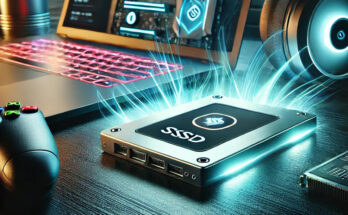Mainframe Computers: A Vital Piece of Modern Computing
A mainframe computer is a type of large, expensive and highly reliable computer that is designed to handle the heavy processing demands of large organizations, such as government agencies, banks, and large corporations. Mainframes are characterized by their ability to process huge amounts of data quickly and efficiently, as well as their ability to support a large number of users and transactions simultaneously.
Some of the key features of mainframe computers include high levels of security, robustness, and reliability, as well as their ability to handle very large amounts of data storage and retrieval. Mainframes are also known for their scalability, as they can be easily expanded to meet the changing needs of an organization.
In terms of technology, mainframe computers often use proprietary operating systems and software, and they typically employ specialized hardware and processing techniques that are optimized for performance and reliability. Overall, mainframe computers play a critical role in the daily operations of many large organizations, and they are an essential part of the global computing infrastructure.
Types of Mainframe Computers
There are several types of mainframe computers, including:
- IBM System/360: This was the first mainframe computer produced by IBM and is considered to be one of the most successful mainframes of all time.
- IBM System/370: This was the successor to the System/360 and introduced virtual memory and improved input/output capabilities.
- IBM System/390: This was the third generation of mainframe computers from IBM and introduced hardware support for parallel processing.
- IBM zSeries: This is the latest generation of mainframe computers from IBM and includes the z900, z800, z600, and z990 models.
- Unisys Clearpath: This is a line of mainframe computers produced by Unisys and is used for mission-critical applications in industries such as finance and government.
- Fujitsu MSP: This is a line of mainframe computers produced by Fujitsu and is used for large-scale enterprise applications.
- Bull DPS: This is a line of mainframe computers produced by Bull and is used for applications such as data warehousing, e-commerce, and cloud computing.
These are some of the major types of mainframe computers, and they are all designed to handle extremely large and complex computing tasks.
Introduction
Mainframe computers are some of the largest, most powerful computers in the world, and they play a critical role in the daily operations of many large organizations. These computers are designed to handle the heavy processing demands of large businesses, government agencies, and other organizations that require a high level of reliability, security, and performance.
What are Mainframe Computers?
A mainframe computer is typically a large, centralized computer system that is used to run a variety of applications and services. Mainframes are characterized by their ability to process huge amounts of data quickly and efficiently, as well as their ability to support a large number of users and transactions simultaneously.
Reliability
One of the key features of mainframe computers is their reliability. These computers are designed to be highly robust and reliable, and they are often used for mission-critical applications that cannot afford downtime. For example, many banks and financial institutions use mainframes to process transactions and store sensitive financial data, and government agencies use mainframes for critical functions such as census data processing and tax processing.
Security
Another important characteristic of mainframe computers is their security. Mainframes are designed to be highly secure, and they often employ specialized hardware and software to ensure the confidentiality and integrity of sensitive data. For example, many mainframes use encryption and secure communication protocols to protect sensitive data during transmission, and they often use specialized security systems to prevent unauthorized access to the system and its data.
Scalability
Mainframes are also highly scalable, meaning that they can be easily expanded to meet the changing needs of an organization. For example, mainframes can be expanded to support additional users or applications, or they can be updated with new hardware or software to increase performance or add new capabilities. This scalability makes mainframes an attractive option for organizations that require a highly flexible and adaptable computing environment.
Data Management
One of the key benefits of mainframe computers is their ability to handle large amounts of data. Mainframes are designed to store and manage massive amounts of data, and they are often used for large-scale data processing and business intelligence applications. For example, many organizations use mainframes to process and analyze data from large databases, such as customer information or sales data.
Multiple User and Application Support
Another important benefit of mainframe computers is their ability to support multiple users and applications simultaneously. Mainframes are designed to handle multiple tasks and processes at the same time, and they often use specialized hardware and software to ensure that each task runs smoothly and efficiently. This makes mainframes a popular choice for organizations that require a high level of performance and reliability.
Cost and Benefits
Mainframe computers are typically more expensive than other types of computers, but they offer a high level of performance, reliability, and security that is difficult to match with other types of systems. Additionally, mainframes are often used in highly regulated industries, such as finance and healthcare, where data security and privacy are of the utmost importance.
Technology
In terms of technology, mainframe computers typically run on proprietary operating systems and software that are optimized for the specific hardware and processing requirements of these systems. Some of the most well-known mainframe operating systems include IBM’s z/OS, z/VSE, and z/TPF, as well as Unisys ClearPath’s OpenVMS and Fujitsu BS2000/OSD.
Specialized Hardware and Processing Techniques
Mainframe computers also employ specialized hardware and processing techniques that are optimized for performance and reliability. For example, mainframes often use hardware acceleration and advanced memory management techniques to ensure that applications and data are processed quickly and efficiently. Additionally, mainframes often use specialized input/output.
Mainframe Operating Systems
Mainframe computers typically run on proprietary operating systems that are optimized for the specific hardware and processing requirements of these systems. Some of the most well-known mainframe operating systems include:
z/OS: This is IBM’s flagship mainframe operating system, and it is used on IBM Z mainframe computers. z/OS is a highly reliable, secure and scalable operating system that is optimized for mission-critical applications.
z/VSE: This is a mainframe operating system developed by IBM that is designed for use in small and medium-sized businesses. z/VSE provides a flexible and scalable platform for running a variety of business applications.
z/TPF: This is a specialized mainframe operating system designed for use in the airline and travel industries. z/TPF provides high-performance transaction processing capabilities, as well as support for multiple languages and platforms.
OpenVMS: This is a proprietary operating system that is used on Unisys ClearPath mainframe computers. OpenVMS is a highly reliable and scalable operating system that is optimized for use in mission-critical applications.
BS2000/OSD: This is the operating system used on Fujitsu BS2000 mainframe computers. BS2000/OSD is a highly reliable and secure operating system that is optimized for use in large-scale data processing and business applications.
These operating systems are typically designed to be highly compatible with each other and with other systems, and they often provide a wide range of software tools and utilities for system administration and management. Additionally, these operating systems are often designed to be highly flexible and configurable, allowing organizations to adapt their mainframe computing environment to meet changing business needs
mainframe computer FAQ
Frequently Asked Questions (FAQs) about Mainframe Computers:
What is a mainframe computer?
A mainframe computer is a large, centralized computer system that is used to run mission-critical applications and services for large organizations, including businesses, government agencies, and financial institutions. Mainframes are known for their high performance, reliability, and security.
How does a mainframe computer differ from a traditional computer?
Mainframe computers are much larger and more powerful than traditional computers. They are designed to handle the processing demands of large organizations and are optimized for performance, reliability, and security. Mainframes also have the ability to support multiple users and applications simultaneously.
What are the key benefits of using a mainframe computer?
Some of the key benefits of using a mainframe computer include high performance, reliability, security, scalability, and the ability to handle large amounts of data. Mainframes are also used in highly regulated industries, such as finance and healthcare, where data security and privacy are of the utmost importance.
What is the cost of a mainframe computer?
Mainframe computers are typically more expensive than other types of computers. However, the cost is offset by the high performance, reliability, and security that mainframes offer, which is difficult to match with other types of systems.
What operating systems do mainframe computers use?
Mainframe computers typically run on proprietary operating systems and software that are optimized for the specific hardware and processing requirements of these systems. Some of the most well-known mainframe operating systems include IBM’s z/OS, z/VSE, and z/TPF, as well as Unisys ClearPath’s OpenVMS and Fujitsu BS2000/OSD.
Can a mainframe computer be used for cloud computing?
Yes, mainframe computers can be used for cloud computing. Many organizations use mainframes as the backbone for their cloud computing environments, as mainframes provide the high performance, reliability, and security required for cloud computing applications.
How secure are mainframe computers?
Mainframe computers are known for their high level of security. They employ specialized hardware and software to ensure the confidentiality and integrity of sensitive data, and they often use encryption and secure communication protocols to protect sensitive data during transmission.
What industries use mainframe computers?
Mainframe computers are widely used in a variety of industries, including finance, healthcare, government, and retail. These computers are used for mission-critical applications, such as data processing, financial transactions, and customer information management.
How does a mainframe computer handle data?
Mainframe computers are designed to store and manage large amounts of data, and they are often used for large-scale data processing and business intelligence applications. Mainframes use specialized hardware and processing techniques to handle data quickly and efficiently, and they can support multiple users and applications simultaneously.




